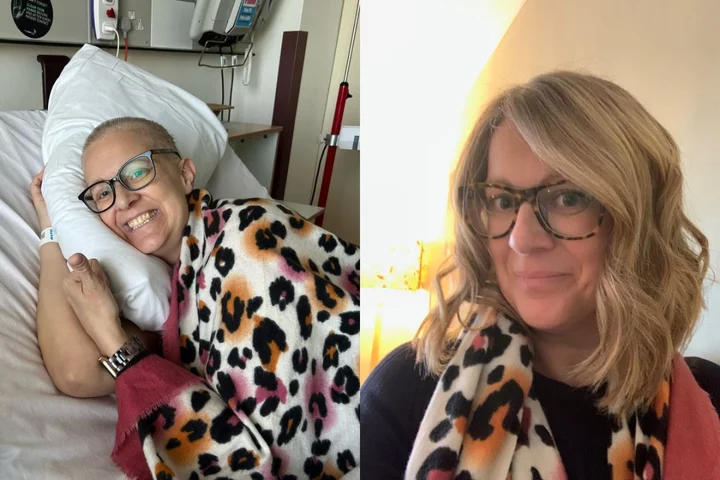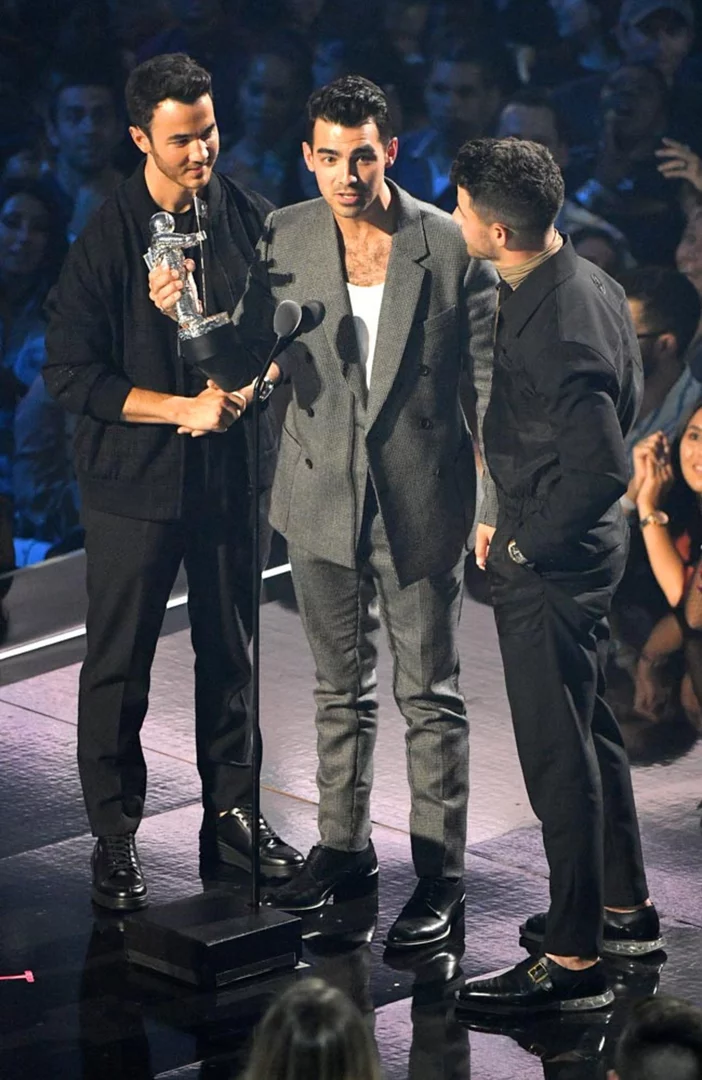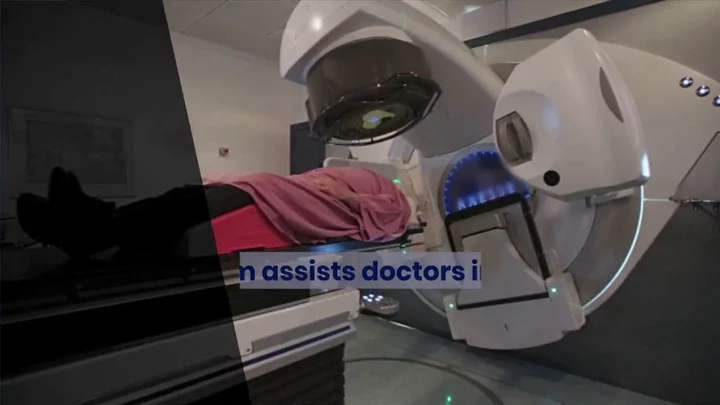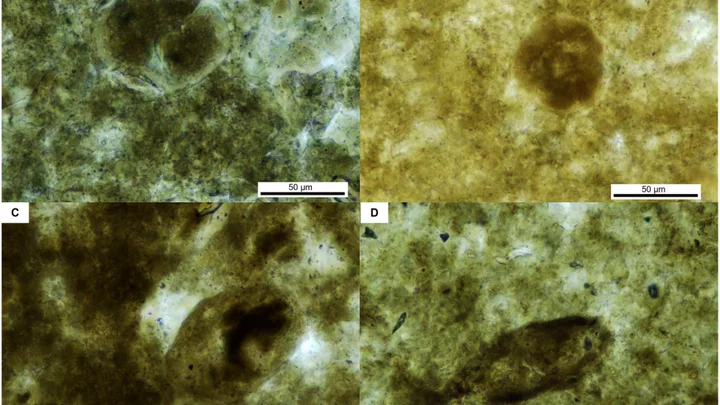
Menswear has made women feel confident for centuries, but will the gendered separation ever cease to exist?
I remember the day I realised the embodiment of my persona was a long-sleeve ironed shirt with only the collar close-lipped. Initially, I gravitated toward the crisp button-down for function, as my former workplace tended to emit heaps of chilly air, but a spontaneous feeling compelled me to button the top, leaving the rest of the shirt open. It may have been, in part, my obsession with wanting to define my look outside of popular construction or how this new silhouette framed my figure. Regardless, the androgynous piece of clothing left me feeling more confident than ever before. A clothing rack full of these formal tops sits perpendicular to my bed now, and I wear them strategically closed with almost every outfit. I couldn’t tell you exactly what it is about them that makes me feel alluring and powerful, but my style hasn’t been the same since. Now more than ever, women are setting aside archival forms of womenswear for the structure of men’s clothing, assuming their most confident, authentic selves. Mini denim shorts, bodycon dresses, and micro skirts are being swapped for baggy jorts and boxers. Individuals are donning contrasting proportions, taking risks, and exuding self-assurance in items that have historically been deemed representative of masculine codes in Western fashion. In doing so, women are diminishing the gap between gendered collections. According to Hazel Clark, professor of fashion studies at Parsons School of Design, women initiated the crossover between menswear and womenswear in the early 19th century when they started working in coal mines and riding horses. A working-class of women deliberately assumed the male dress code, whether business or activity related, because womenswear constricted their necessary movement with tight bodices and corded petticoats. Here, function and ability took precedent over society’s expectation of femininity as more opted to dirty a pair of trousers instead of their voluptuous gowns. Heading into the Second World War and the 20th century, the design gap minimised further when women’s roles in society advanced. In the 1940s, men were forced to leave their factory jobs for war, leaving their female counterparts to fill their positions. For women to be respected in the workplace, they mirrored the male look and wore the classic pantsuit. Francesca Granata, professor of fashion theory and history at Parsons, identified the “power suit of the 1980s” as “a classic instance of women trying to access men’s power in the workplace by wearing an outfit which imitated menswear and with wife shoulders: the ideal male physique.” She noted: “Yet the wide-shouldered suit jacket was often rendered appropriately feminine by being paired with a skirt.” With this came an influx of women wearing these masculine codes outside of the workplace. Though my grey dress pants from the men’s section of a closet sale were welcomed into my weekly rotation almost immediately, it took a lot of courage and self-assurance back then for women to wear similar pairs, just like it did for them to wear miniskirts when both styles were socially unacceptable. The initial need for “businesswear” transformed into desired style even if it meant a woman could be labeled as “inappropriate” or be refused at the door of an establishment. Looks from men turned to public disapproval, but that didn’t stop the progression of women dressing in menswear at all. “Although baggy clothing has been acceptable for men for quite some time, especially in the US, unlike older appropriation of menswear which were often adapted to be more skintight or revealing or somewhat rendered ‘feminine’ baggy clothes question the old dictum that women’s bodies should be on display for the male gaze,” Professor Granata remarked. In other words, this “sense of power dressing” left the confines of the office environment alongside any lingering thought to the heteronormative gaze. Fast forward to the early 21st century, when the groundwork for this fashion fusion had been laid in terms of utility and preference. As society began to understand sexuality and gender fluidity, non-gendered collections became increasingly popular. Designers became more proactive about creating androgynous clothing that didn’t need to be separated into the two typical identifiers: women and men. “Fashion must get to a point where we don’t have to talk about gender,” designer and creative director of Loewe Jonathan Anderson wrote in Amelia Anderson’s “What We Can Do Better” in 2021, nine years after he introduced the first transgender collection for his eponymous brand. “Fashion can be a way to experiment with character or to work out your identity, and I believe that clothes can have a protective role on a more emotional level.” Anderson’s obsession with how queer individuals dressed contributed to his perception that fashion can be used to “break the rules”. To him, clothing is a marker of individuality and subculture, which is what motivates him to create designs for people to express themselves free from outdated norms. Between boxy, textured T-shirts, bouncy blouses, and tailored high-waisted pants, Anderson’s worked to incorporate rival style cues even in his gender-specific collections. “Clothing is full of paradoxes, but ultimately it can empower us - and in a world that has historically taken power away from queer people, that can be vital,” he proclaimed. “In a world that often expects certain things for certain people when it comes to clothes - where society wants men, say, to wear some things, and women to wear others - I sometimes question why I do menswear and womenswear shows. But for me, it’s not about classifying people, it’s about using these categories as ideas - ideas to borrow from.” As designers helped bridge the gap, celebrities like Hailey Bieber and Bella Hadid have been seen being more experimental in campaigns for big name brands as well as in their personal street style. The 26-year-old Rhode Skin founder has been a recognised ambassador for the French fashion house, Yves-Saint Laurent, a company which has irrevocably impacted womenswear since their 1966 creation of a menswear-motivated tuxedo for women called “Le Smoking.” Both Bieber and Hadid blend feminine and masculine codes in everyday wear, leading the craze for oversized jean shorts and lengthy vintage sportswear paired with dainty ballet flats and platform boots. Other brands, such as Uniqlo and Thom Browne, design collections labelled and distributed as menswear and womenswear, but the items are still being bought and worn interchangeably. “It’s hard to explain,” Marissa Petteruti, senior menswear designer at Rag & Bone, tells The Independent when asked why she feels more assured in men’s clothing over feminine-labelled pieces. “I’ve always just felt more comfortable in, you know, oversized men’s shirts and pants. I kind of always have gravitated toward men’s fashion. I remember when I was a kid, my parents used to tell me: ‘You have to wear a skirt one day a week.’ I never saw why I couldn’t wear whatever I wanted. So maybe part of it became going against what my parents wanted me to do.” Petteruti has cultivated a closet full of suit pants, designer shirts, and vintage bomber jackets in pursuit of the perfect capsule wardrobe and collection of exclusive ready-to-wear. Ever since she attended the Parsons School of Design, pressure and expectation were absent from her style. Here, Petteruti was drawn to the serenity of menswear, and she appreciated the simplicity of its form more than women’s clothing. Her eyes wandered to streetwear brands such as Supreme and Hood-by-Air because the concept of a lux T-shirt intrigued her, and oversized pieces were pleasing. When she started at Rag & Bone, she learned that men’s tailoring was more extensive, but even so, the trends were ephemeral - meaning the pieces were inherently timeless. Womenswear detailing such as peplum cuts, scallop or lace trimming, floral embellishments, and sheer fabrics tend to cycle through seasonal collections more frequently than the stylistic choices and material preferences within menswear. The classic button-down may be presented in a specific range of colours depending on whether it’s fall or spring, but the shape and design stay the same. In other words, womenswear is more likely to follow suit with trends. Industry leaders and A-listers embracing a more avant-garde mindset in ready-to-wear and street style begs the question of whether brands will ever officially scrap the formal separation of womenswear and menswear. “Why do they have to be called ‘men’s clothing’? Just ‘cause you put the buttons on one side of the shirt and the fly on one side of the shirt and the reverse. It’s, it’s silly to me,” Petteruti agreed when asked if she thought the division was necessary. “I mean, the interesting thing about fashion now is at any given moment, it’s so diverse. We don’t all wear the same things to be in fashion. If we wanted to be in fashion, I mean, regardless of our sort of age or gender, you know, they’re like lots of different choices we can make, depending on the kind of the group we associate with or who we follow,” Clark explained. But Clark doesn’t believe concrete separation is on the horizon, due to the sizing and proportional differences between a man versus a woman. “Men’s and women’s bodies are different. You know, I mean, that’s part of it. Size and physique will prevent womenswear and menswear from being entirely infused with one another,” she proclaimed. Petteruti would argue that there’s potential. Already, she’s seen Rag & Bone mix more feminine codes into their menswear designs with varying fabrics and silhouettes. Being that inspiration is often plucked from the demand and visibility of others who motivate obsessions, the runway no longer dictates style fads. This means it may be expensive on the backend for companies, but we could see collections move away from the label if consumers want more androgynous, unisex pieces. As for Granata, she interprets the division of womenswear and menswear as already having been “tenuous,” which is exactly why women found themselves gravitating toward masculine codes to begin with. Read More How hip-hop went from being shunned by big business to multimillion-dollar collabs Dior celebrates 5 years as designer in gender-fluid Paris men's show Womenswear leads the way as Ted Baker sales soar
2023-08-11 23:58

Katharine McPhee reveals she and husband David Foster suffered a ‘horrible family tragedy’
Katharine McPhee has revealed that she and husband David Foster have suffered a “horrible family tragedy”. The singer, 39, shared a statement to Instagram on 11 August to announce that she’ll be missing the rest of her husband’s tour in Asia, where she’s been performing as a guest, due to a family emergency. Although she didn’t specify what the tragedy was, she wrote that she’ll be heading home to be with her loved ones, while implying that her husband will still be doing the shows this weekend. “Dearest Jakarta fans, it’s with heavy heart I announce I have to miss our final two shows of our Asian run,” she wrote. “David and I have had a horrible tragedy in our family and at least one of us needs to get back home to our family.” She concluded: “Please know how sorry I am and how much I wish to return someday and perform for you all. Love, Katharine.” Many friends and fans of the couple took to the comments of McPhee’s post to send her kind messages amid the family tragedy. “Sending my love and prayers for your family,” Masked Singer judge Nicole Scherzinger wrote, while Linda Thompson added: “Sending you and David love, & hoping that everything is okay.” “Sending you loads of love. I’m thinking of you guys,” Amanda Kloots also wrote. Foster, 73, is still set to play at the Sentul International Convention Centre in Jakarta, Indonesia, on 11 August and 12 August, according to his official website. He will then be on a hiatus from his tour, before returning to the stage on 1 November in Warren, Michigan. The Independent has contacted a representative for McPhee and Foster for comment. Foster and McPhee made their official debut as a couple in 2018, before officially tying the knot the next year. They welcomed their first child, Rennie, in February 2021. Since then, they have continued to post about their son on social media, hinting that he also has a musical side. In June, Foster shared a video on Instagram of Rennie playing the drums, alongside the caption: “PROGRESS!! Two years three months.” During an interview with Entertainment Tonight in October, Foster acknowledged that although his youngest child has developed an interest in drumming, it’s still soon to tell if he’ll become a musician like his parents. “You know when you look at somebody like Andre Agassi and Steffi Graf, their kids are very talented... but they’re not tennis players, so we don’t know,” he said “He’s so young.” McPhee also agreed, adding: “It makes sense that he’d be musical, but we’re not really sure. He’s certainly obsessed with the drums! Or imaginary drums, for that matter.” Read More Katharine McPhee reveals whether she and David Foster want more children David Foster opens up about raising a toddler at age 73 Katharine McPhee defends husband David Foster after backlash over postpartum body comment Gemma Atkinson slams trolls who called her ‘fat’ just three weeks after giving birth Mother diagnosed with cystic fibrosis, anorexia and incurable cancer 7 ways for parents and carers to ease back-to-school worries
2023-08-11 23:53

Olivia Rodrigo shows off a bad girl side in new 'Bad Idea Right?' music video
Olivia Rodrigo dropped her second "Guts" single, "Bad Idea Right?," on Friday.
2023-08-11 23:16

Prolonged drought deepens Afghanistan's humanitarian crisis
NAHR-E-SHAHI, Afghanistan In parched brown hills in north Afghanistan, Abdul Hahad tears stalks of wheat out of the
2023-08-11 22:28

After reported suicide of participant, human research studies suspended at psychiatric institute affiliated with Columbia University
The US Department of Health and Human Services has suspended research studies involving human subjects at a psychiatric institute affiliated with Columbia University after the suicide of a research participant, according to research documents.
2023-08-11 22:16

Mother diagnosed with cystic fibrosis, anorexia and incurable cancer says she ‘doesn’t feel afraid of dying any more’
A mother who was diagnosed with cystic fibrosis (CF) just days before her 30th birthday and later told she has myeloma – an incurable type of blood cancer – said she has “taught (herself) a whole new script for death” and, rather than feeling afraid, she feels “empowered” by what she has overcome. Ellie Allman, 42, who lives in Hadleigh, Suffolk, with her husband Steve, 44, a charity consultant, and son Harvey, 13, used to work as a specialist adviser for vulnerable young people but she had to retire, aged 35, after being diagnosed with CF aged 29. CF is an inherited condition that causes sticky mucus to build up in the lungs and digestive system, and while Ellie did not “feel anything initially” when she received her diagnosis, she “struggled mentally” later on and ended up developing anorexia, as she felt she had “no control over anything”. “I was off work, I was frustrated, I was angry, my body didn’t feel right CF-wise – I had no energy, I couldn’t do what I wanted,” Ellie told PA Real Life. “I was spending my days weighing everything I ate and just constantly doing the maths. “It seems ridiculous now, but it made so much sense at the time to that very determined person who was just clinging on to any form of normal life.” After becoming eligible to take Kaftrio in June 2021, a medication which significantly improves lung function, she noticed a vast improvement in her health. However, in less than a year, Ellie “randomly” became very unwell, and this led to the devastating news she has incurable cancer. After this, she underwent four months of chemotherapy alongside immunotherapy, followed by a stem cell transplant to replace the damaged blood cells with healthy ones in March 2023, and then a further two months of consolidation chemotherapy which included immunotherapy. She lost her hair, felt “exhausted” and anxious, and experienced pain “worse than labour contractions” from the “harvest of (her) stem cells” before the transplant, but she knew the pain would not last forever – and she said the support she has received from her husband, son, doctors, consultants and the charity, Ending Life’s Taboo, has been invaluable. She is now in remission and undergoing maintenance chemotherapy, and while she has experienced feelings of anger and resentment, she knows she can handle anything that her health throws at her. “I’ve taught myself a whole new script for death; I find it difficult to live with failing health, but I don’t feel afraid of dying any more,” she said. “We don’t get a choice, that’s just how it goes, but I think having the right people around you is so important. “I think it’s really natural when you’re young, or when you’re scared, to unintentionally isolate yourself or become withdrawn, and that has never ever worked for me. “I have to work hard not to lose myself within these diagnoses, and I have to remind myself that I’m still the person I was before my diagnosis.” During her childhood, Ellie developed whooping cough “in succession” – a bacterial infection of the lungs and breathing tubes – along with other chest infections and bouts of flu, but she was otherwise fit and healthy and used to run, swim, and was even a sports captain at school. She remembers certain periods of her life where she felt extremely fatigued and achy, but since her mother preferred alternative and natural medicines, Ellie rarely visited the doctor – and given she had “coughed (her) entire life”, she was “dismissive” of her symptoms. Later on, during her pregnancy, Ellie developed repeated chest infections, experienced difficulties with her speech, and could not clear her throat, but it was not until after she gave birth to her son Harvey, now 13, in 2010 that she underwent further testing. In February 2011, just days before her 30th birthday, it was confirmed she has cystic fibrosis – and, at first, she said she was “not willing to make room for CF in (her) life”. “You’ve lived your whole life not ill and then suddenly there’s this label,” Ellie said. “I didn’t feel anything initially, but I struggled with it later on, mentally.” According to the charity Cystic Fibrosis Trust, CF can be diagnosed during a new-born screening, which is carried out as part of the heel-prick test that all babies in the UK receive, but since this was only introduced nationally in 2007, this was not available for Ellie. Moreover, Ellie’s rare genotype made her CF even more difficult to diagnose. She underwent treatment in the form of intravenous (IV) antibiotics and physiotherapy sessions and noticed an improvement in her health, but when she started experiencing difficulties with her digestion – caused by a build-up of thick mucus – she started to feel “really frustrated with the world”. The side effects of the prescribed drugs also meant she could not conceive again – and while she is extremely grateful for her family, this had a “massive” impact on Ellie at the time. Ellie was then told she needed to take the medication Creon with food, which aids digestion, except for with fruits and vegetables, and this led to her developing anorexia in 2016. She said her head would “scream at her” but she could not “free (herself)” from negative thoughts that would body-shame her. “I had no control over anything, it was the perfect storm in a way; the perfect circumstances for me to use that as a control mechanism,” she said. Ellie became very weak after her “dramatic weight loss” of more than four-and-a-half stone, but after realising she needed to prioritise her health and time with her family, she underwent treatment and therapy to “reframe” her negative thoughts, so they were no longer a “dominant” force in her life. In June 2021, Ellie started taking Kaftrio, and she described it as “a miracle drug”, but approximately 11 months later, she began experiencing a “burning pain in (her) chest”. This led to the heart-breaking news in July 2022 that she has myeloma – a type of blood cancer, which is incurable – and the pain caused by treatments was unimaginable at times. She said: “Since Kaftrio thins the mucus, the high-dose chemo just ripped through the mucus in my throat, so I couldn’t swallow; the pain was insane. “My throat was blistered and ulcerated, so I couldn’t eat and I was put on to a feeding tube. “But I knew I had to get through it because if I stay in remission for two years, I could have a second transplant in future.” Ellie is now in remission and is undergoing maintenance chemotherapy, which she said “feels like a breeze in comparison”, and she is continuing to take Kaftrio, meaning the symptoms of her CF have “massively reduced” and she can enjoy the “simple things in life again”. She likes going on dog walks, meeting friends for a drink, and spending time with her “favourite people”, as that “makes everything else feel better” – and looking back now, she feels “empowered” that she has handled her CF, anorexia, cancer diagnosis, and treatments. While myeloma is incurable and Ellie has had some “existential thoughts”, she said processing what may happen in life has been “freeing” and she has always held on to hope. She has applied to become a magistrate and hopes another “miracle drug” like Kaftrio may become available during her lifetime to treat the cancer. She added: “Even in the most testing of times, every time I have found something positive to focus on or something to hope for and that has kept me going.” Ellie’s cancer is not linked to CF. To find out more information, visit: www.cysticfibrosis.org.uk/what-is-cystic-fibrosis/how-does-cystic-fibrosis-affect-the-body/cystic-fibrosis-complications/cancer Read More Dancer who has Tourette’s tics says Lewis Capaldi’s Glastonbury performance left her ‘speechless’ ‘Long Covid has taken away my ability to eat food or urinate - I don’t recognise myself anymore’ How to lower your blood sugar levels, as new research reveals heart disease link Groundbreaking cystic fibrosis drug made seven-year-old girl feel better ‘within hours’
2023-08-11 20:20

Dan Trachtenberg hints at Prey sequel
Prey director Dan Trachtenberg has hinted there may be a sequel on the horizon because he had some 'really exciting conversations' about where to take the movie next
2023-08-11 19:21

James Bay is back with a new guitar ballad
James Bay has released the new song 'Goodbye Never Felt So Bad' about missing family on the road.
2023-08-11 19:18

Jonas Brothers tease 'very famous' special guest for pair for Yankee Stadium shows
The Jonas Brothers have a "very famous" guest joining them at their Yankee Stadium concerts.
2023-08-11 19:17

Roundup: Shakira Takes Another Shot at Gerard Pique; Maui Wildfires Death Toll Rises; Spain Moves on at World Cup
Shakira took another shot at Gerard Pique, Maui wildfires death toll rises, Spain topped the Netherlands at the Women's World Cup and more in the Roundup.
2023-08-11 19:16

AI could soon be used to treat cancer in the NHS
Artificial intelligence could soon be used to perform radiotherapy to treat certain cancers for the first time. Draft guidance from the National Institute for Health and Care Excellence (Nice) has given approval to nine AI technologies for performing external beam radiotherapy in lung, prostate and colorectal cancers, which could save radiographers hundreds of thousands of hours and help relieve pressure on radiotherapy departments. Currently therapeutic radiographers outline healthy organs on digital images of a CT or MRI scan by hand so that the radiotherapy does not damage healthy cells by minimising the dose to normal tissue. Nice found that using AI to create the contours could free up between three and 80 minutes of radiographers’ time for each treatment plan, and that AI-generated contours were of a similar quality to manually drawn ones. Nice said that the contours would still be reviewed by a trained healthcare professional. It comes after a study found AI was safe to use in breast cancer screenings with evidence growing that it can be more effective in detecting cancers. Sign up to our free Indy100 weekly newsletter Meanwhile, Nice said it was also examining the evidence for using AI in stroke and chest scans. Dr Sarah Byron, the programme director for health technologies at Nice, said using AI could help reduce waiting lists. She added: “NHS colleagues working on the frontline in radiotherapy departments are under severe pressure with thousands of people waiting for scans. “The role imaging plays in radiotherapy treatment planning is quite pivotal, so recommending the use of AI technologies to help support treatment planning alongside clinical oversight by a trained healthcare professional could save both time and money. “We will continue to focus on what matters most and the recommendations made by our independent committee can help to bring waiting lists down for those needing radiotherapy treatment.” The health secretary, Steve Barclay, welcomed the announcement. He said: “It’s hugely encouraging to see the first positive recommendation for AI technologies from a Nice committee, as I’ve been clear the NHS must embrace innovation to keep fit for the future. “These tools have the potential to improve efficiency and save clinicians thousands of hours of time that can be spent on patient care. Smart use of tech is a key part of our NHS long-term workforce plan, and we’re establishing an expert group to work through what skills and training NHS staff may need to make best use of AI.” Charlotte Beardmore, the executive director of professional policy at the Society of Radiographers, welcomed the draft guidance but said it was not a replacement for staff and caution was needed. “It is critical there is evidence to underpin the safe application of AI in this clinical setting,” she said. Using AI would still require input by a therapeutic radiographer or another member of the oncology multi-professional team, she added. “Investment in the growth of the radiography workforce remains critical.” Science is pretty amazing. Have your say in our news democracy. Click the upvote icon at the top of the page to help raise this article through the indy100 rankings.
2023-08-11 18:21

Scientists are cutting open parasitic eggs from 200 million years ago
A 200 million-year-old parasite has been discovered in fossilised poo, in the latest not-at-all-scary instance of scientists unearthing a species which blighted the Earth in ancient times. Researchers found that the earliest predators on the planet were infested with roundworm, also known as nematodes, among multiple other parasites. The fossilised poo, which is known to palaeontologists as coprolite, is thought to belong to a type of semi-aquatic phytosaur, which was a crocodile-like predator. Sign up to our free Indy100 weekly newsletter It comes weeks after another team revived a prehistoric worm – the catchily named Panagrolaimus kolymaensis – which was found dormant in the Siberian permafrost in a state of “cryptobiosis”. The latest study saw researchers from Mahasarakham University, Thailand, analyse a three-inch-long portion of ancient poo and discover five types of parasitic remnants. The group sliced open the parasitic egg fossils with a diamond saw using a “standard thin section method,” their report said. The ultra-thin slices allowed the palaeontologists to look at cross-sections of the ancient infectious microbes under a microscope. One was identified as a nematode worm egg, while the others are thought to be either more eggs, protozoan cysts or spores from moss and ferns. While modern parasites are often an important part of ecosystems, it is usually more difficult to work out what their ancient equivalents did, because there are so few examples in the fossil record. The creatures often inhabited the soft tissues of their hosts, but are rarely preserved as fossils, making the latest discovery all-the-more significant. This fossilised late Triassic-era coprolite (the poo), was shielded from the elements in the Huai Hin Lat geological formation in Thailand, which is over 200 million years old. It was found by local villagers, according to the study's lead author, paleontologist Thanit Nonsrirach. “The peculiar appearance of these findings intrigued the villagers, who considered them potentially auspicious and capable of bestowing good luck if repurposed as talismans,” Nonsrirach told news outlet Inverse. “In 2010, our team received word of this discovery and embarked on a field expedition, guiding the villagers to the actual fossil site.” The discovery is the first record of parasites in a terrestrial vertebrate host from the late Triassic period in Asia, and provides a rare look at the life of an ancient creature that was infected by multiple species. This discovery also adds to the few known examples of nematode eggs preserved within the coprolites of Mesozoic animals. “Parasites of several species, including Ascaridida (roundworm) eggs were found in a coprolite, probably produced by a crocodile-like reptile and possibly a phytosaur,” said Nonsrirach, who works at Mahasarakham University's Palaeontological Research and Education Center. “This is therefore the first discovery of Ascaridida eggs and evidence of multi-infection in a host assignable to the Crurotarsi from the Late Triassic of Asia. “Coprolite is a significant palaeontological treasure trove, containing several undiscovered fossils and expanding our understanding of ancient ecosystems and food chains. “These findings are therefore a significant contribution to scientific understanding of the distribution and ecology of parasites of the distant past.” Have your say in our news democracy. Click the upvote icon at the top of the page to help raise this article through the indy100 rankings.
2023-08-11 18:21
